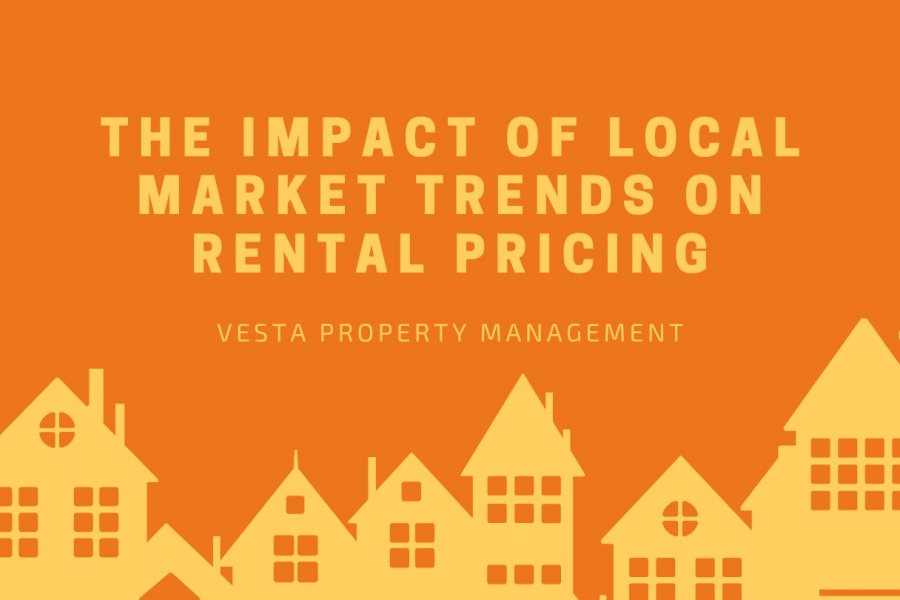
- Rental Prices Follow the Market: Local economic growth, infrastructure, and development all influence rent, while slow job growth or regulatory changes can limit increases.
- Location and Property Quality Matter: Neighborhood amenities, property condition, and lifestyle factors can significantly affect perceived value and rental income.
- Adaptation Protects Investment: Landlords who monitor trends, stay agile, and adjust pricing or features proactively maintain occupancy and maximize returns.
Rental prices don’t change on their own. They move with the rhythm of the local market. When neighborhoods grow, infrastructure improves, or new businesses open, housing values often rise in response. But when job growth slows or regulations tighten, rent increases can lose momentum.
The rental market functions like a living ecosystem where every shift in employment, policy, or development affects the entire environment. Successful landlords and investors understand these patterns and adapt to them instead of pushing against the current.
At Vesta Property Management, we’ve created this guide to help landlords understand how the local market influences rental pricing, investment returns, and long-term property performance.
Learn How We Can Help You Maximize Your Home’s Potential.
Key Factors That Influence Rental Pricing
1. The Pulse of the Economy
Behind every housing market lies the wider economy. Job creation, wage growth, interest rates, and inflation all shape what tenants can afford. When new industries thrive, people move in, and rents rise.
During downturns, tenants tighten budgets or share units to save. Smart landlords monitor these patterns early, as they’re the first signs of where rent levels are headed.
2. Supply and Demand
Few dynamics are as straightforward as the tug-of-war between available units and people needing them. When housing construction lags behind population growth, scarcity drives up prices.
Fast-growing cities where housing lags behind demand give landlords a significant advantage. But when too many developments launch at once, the reverse happens, tenants gain leverage, and rent growth plateaus.

3. Property Location
“Location, location, location” remains the oldest and truest real estate mantra. Proximity to job centers, schools, hospitals, or transit hubs often commands a premium, but lifestyle plays an equally strong role.
Cafés, walkability, and safety drive higher rents in neighborhoods that offer a better quality of life. Two identical units can differ dramatically depending on the neighborhood vibe. Tenants, after all, rent a way of living as much as a place to sleep.
4. Property Type, Condition, and Experience
Each property type caters to a different lifestyle. Within those categories, details matter: modern lighting, energy-efficient appliances, and a well-kept exterior can significantly elevate perceived value.
In contrast, dated interiors or deferred maintenance quickly erode appeal, even in strong markets. Small upgrades, such as fresh paint, faster Wi-Fi, and secure parking, can translate to measurable returns.
Discover the Benefits of Hiring Vesta Property Management!
5. Policy and Regulation
Government decisions often dictate how profitable your property can be. Zoning changes determine what gets built and where. Tax incentives may encourage new housing developments.
Rent control ordinances can cap income growth but stabilize tenant turnover. Landlords who stay informed and compliant with regulatory changes can avoid legal pitfalls and adapt faster when policy winds change.
6. Seasons and Cycles
Real estate has its own calendar. Rents and lease activity tend to peak during spring and summer, which is when families prefer moving between school years. Conversely, winter often brings slower turnover, which is an ideal time for renovations or marketing experiments.
Beyond annual rhythms, there are broader cycles: economic booms inflate values, while recessions cool them. Savvy investors plan acquisitions, remodels, and renewals with these patterns in mind.

7. The Power of Infrastructure and Redevelopment
One infrastructure project can transform an entire district. A new subway line, revitalized riverfront, or mixed-use development can elevate an area from “up-and-coming” to “most wanted.”
Investors who recognize these signals early, before property prices reflect the coming growth, often enjoy exceptional returns. Urban renewal raises property values and attracts tenants willing to pay for convenience and improved quality of life.
8. The Competitive Landscape
Every rental property competes in a crowded field. Prospective tenants compare rent prices, amenities, and lease terms like shoppers browsing listings. Understanding your competition and how your property stands out is as vital as knowing your own strengths.
Learn How We Help Real Estate Investors Succeed!
How These Market Forces Shape Rental Prices
1. Scarcity and Demand in Action
When demand exceeds supply, renters often rush to secure units, sometimes bidding higher or accepting fewer perks. But when new developments saturate the market, landlords must adapt: lower prices, flexible terms, or added value through bundled utilities or amenities.
2. The Economy’s Ripple Effect
Prosperity fuels spending power, allowing landlords to raise rents without losing occupancy. Yet in leaner times, tenants scale down or negotiate harder. Recognizing early warning signs in employment or inflation data allows investors to adjust strategies proactively.
4. Value Through Improvement
Rent isn’t just tied to size or location, it’s also tied to experience. Modernized bathrooms, strong internet, or eco-friendly lighting can make your property feel future-ready and justify premium pricing. Even modest renovations can shorten vacancy periods and strengthen tenant loyalty.
5. The Art of Strategic Pricing
Beyond comparable listings, landlords experiment with incentives, like free parking, early renewal discounts, or flexible lease durations, to attract quality tenants quickly. Just as in retail, the perceived deal often closes the sale.

Action Steps for Landlords and Investors
1. Stay Market-Literate
Keep tabs on local job data, construction permits, transport projects, and demographic reports. These clues reveal where rent trends are heading.
2. Remain Agile
Be ready to adjust lease agreement terms, unit features, or pricing models as market conditions evolve. Agility protects profits during downturns.
3. Think Beyond the Month
Short-term rent hikes mean little if they erode long-term stability. Focus on how future infrastructure, zoning shifts, or demographic trends will shape your property’s appeal over time.
4. Partner With Professionals
Property managers and agents bring valuable local knowledge and experience that help landlords make smarter decisions. Their insights into market trends, tenant behavior, and maintenance planning can prevent costly mistakes, from setting the wrong rent price to overlooking key legal requirements.
Discover Our Property Management Services!
The Bottom Line
Rental pricing mirrors the health of the local ecosystem. Each variable, from job creation to street lighting, plays a role. Tenants ultimately pay for more than just square footage; they pay for comfort, access, and lifestyle.
By recognizing these patterns and adjusting accordingly, landlords move beyond reacting to market shifts and learn how to navigate them with confidence.
If you’re ready to sharpen your rental strategy, consider partnering with Vesta Property Management. Our trusted team can help you interpret market trends, set competitive rates, and protect your investment returns.